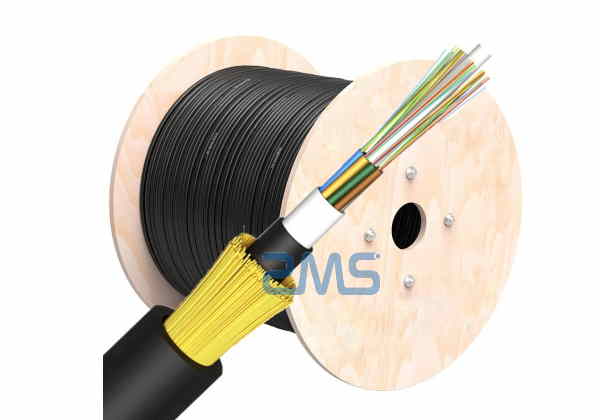Difference Between OPGW Fiber Optic Cable and ADSS Fiber Optic Cable
OPGW and ADSS fiber optic cables are both types of outdoor fiber optic cables, which are used to transmit data over long distances.
These cables are made up of extremely thin strands of glass or plastic, known as optical fibers, which are encased in protective sheathing.
The fibers are arranged in a bundle, called a cable core, which is then surrounded by additional layers of protective material to create the final cable.
While OPGW and ADSS cables may appear similar at first glance. There are some key differences between the two that make them suitable for different applications and environments.
Understanding these differences is important for choosing the right type of cable for a specific application.

Installation Method
One of the main differences between OPGW and ADSS fiber optic cables is the way they are installed.
OPGW fiber optic cable is installed on overhead transmission lines, while ADSS fiber optic cable is installed on the side of transmission towers.
This means that OPGW fiber optic cable is subject to different environmental factors and physical stresses than ADSS fiber optic cable.
Type of Protective Sheath
Another key difference between outdoor OPGW and ADSS fiber cables is the type of protective sheathing they use.
OPGW fiber optic cable is encased in a layer of metal, typically aluminum or steel, which provides additional strength and protection.
This metal sheathing also serves as a conductor, allowing the cable to function as a ground wire for the transmission line.
ADSS fiber optic cable, on the other hand, is typically encased in a layer of aramid yarn, which provides strength and protection without conducting electricity.
Difference of Design
The design of OPGW and ADSS fiber optic cables is also different.
OPGW optical cable is typically designed with a central tube, called the loose tube, which is filled with optical fibers.
The loose tube is surrounded by a layer of water-blocking gel, which helps to protect the fibers from moisture.
The cable is then surrounded by additional layers of protective material, such as aramid yarn, to provide additional strength and protection.
ADSS optical cable, on the other hand, typically uses a tight buffer design, where each fiber is encased in a layer of protective material, called a buffer coating.
This provides additional protection for the fibers, making them more resistant to damage from bending or crushing.

Temperature Rating
Another key difference between OPGW and ADSS fiber optic cables is their temperature rating.
OPGW fiber optic cable for the transmission line is typically designed to operate at temperatures ranging from -40°C to 85°C, while ADSS fiber optic cable is typically designed to operate at temperatures ranging from -40°C to 70°C.
This means that OPGW fiber optic cable is better suited for use in extreme temperature environments, while ADSS fiber optic cable is more suitable for use in milder temperature conditions.
Transmission Performance
In terms of transmission performance, OPGW and ADSS fiber optic cables are generally similar.
Both types of cables can transmit data at high speeds over long distances, without the need for signal amplification.
They are also immune to electromagnetic interference, making them ideal for use in environments with high levels of electromagnetic interference.
One of the main advantages of OPGW fiber optic cable is its ability to function as a ground wire for the transmission line.
This means that it can provide both data transmission and grounding capabilities, which can simplify the design of the transmission line and reduce the amount of cable required.
ADSS fiber optic cable, on the other hand, does not conduct electricity, so it cannot be used as a ground wire.
About ZMS Cable
ZMS Cable Company is a renowned manufacturer of both ADSS and OPGW fiber optic cables, and our products offer several advantages.
ZMS’ ADSS cables are made of high-quality materials, such as aramid yarn and aluminum-clad steel, which provide excellent strength and durability.
These cables are suitable for use in areas with high wind loads and harsh environmental conditions.
ZMS’ OPGW cables, on the other hand, offer high electrical conductivity and lightning protection, which is essential for power transmission lines.
These cables also have low attenuation and excellent bandwidth, making them ideal for high-speed data transmission.
Additionally, both ZMS’ ADSS and OPGW cables have been rigorously tested to ensure they meet industry standards and customer requirements.
